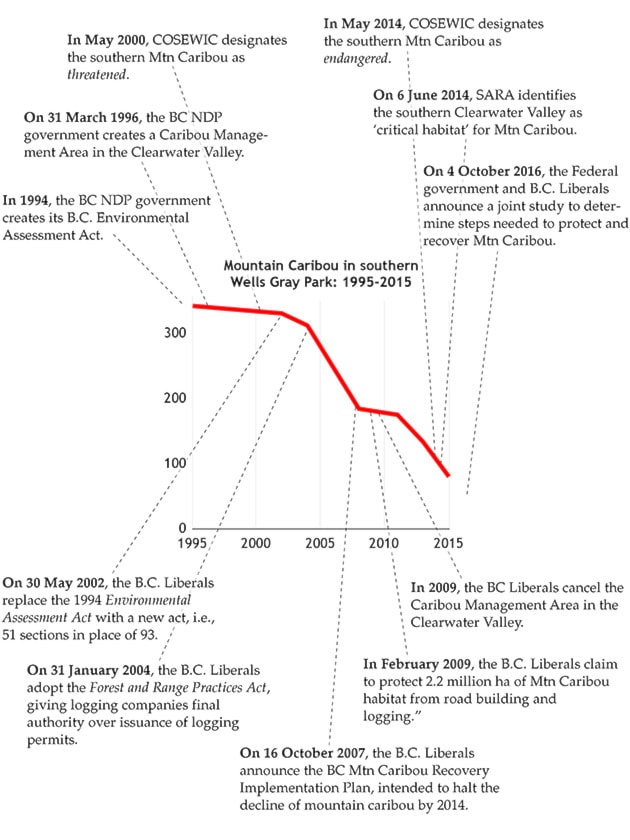“This sounds good on paper and will perhaps be so on the ground too. The devil will of course be in the details,” says Trevor Goward regarding a recent provincial government announcement that it would commit $27 million for mountain caribou recovery.
The Upper Clearwater naturalist and lichenologist has been a longtime critic of the government's attempts to help the caribou survive.
“Since 2007 - the year the B.C. government announced its Mountain Caribou Recovery Implementation Plan - the B.C. Liberals have been focussing mostly on birthing pens, transplants, liberalized moose and deer hunts and, of course, wolf and cougar culls - all stop-gap measure that simply aren't working,” Goward said. “The proof of this is that whereas there were about 1900 southern mountain caribou in the world in 2007; there are only about 1300 now. So more of the same is unlikely to work.”
According to the government announcement, the new program will build on existing efforts and will have five key components:
• Critical caribou habitat protection and restoration;
• Maternal penning;
• Predator management;
• Research and monitoring; and
• Increased compliance and enforcement.
“It's true that the Hart Mountains sustain the largest remaining population; but Wells Gray sustains the second largest which, unlike the Hart Mountains population, is already protected, at least in theory. And yet they're now very much endangered,” Goward said.
Premier Christy Clark announced the additional funding on Feb. 1 during the 14th annual Premier’s B.C. Natural Resources Forum.
“We’re taking action to protect the long-term survival of the woodland caribou,” said Clark. “We’ve already invested millions of dollars and set aside critical habitat, but stronger action is required to reverse population declines, and ensure that our children and grandchildren have the opportunity to experience these animals in the wild.”
“Caribou recovery is complicated by numerous factors including habitat alteration, climate change, increased predation and competition from moose, deer and elk,” said Minister of Forests and Lands and Natural Resource Operations Steve Thomson. “By investing $8 million this year, and another $19 million over the next two years, B.C. is making a clear statement that it is serious about caribou recovery.”
According to the government announcement, one of the first items to be completed will be a strategic action plan specific to the Quintette herd in the South Peace. Additional maternal penning projects, designed to increase calf survival of new caribou are also being contemplated. There are currently two maternal penning projects, one near Revelstoke and the other near West Moberley.
There are 51 woodland caribou herds in British Columbia divided into four groups: southern mountain, central mountain, northern mountain, and boreal.
There are some 19,000 caribou in the province today, compared to between 30,000 and 40,000 at the turn of the last century.
Find out more about B.C.’s caribou: www2.gov.bc.ca/gov/content/environment/plants-animals-ecosystems/wildlife/wildlife-conservation/caribou
